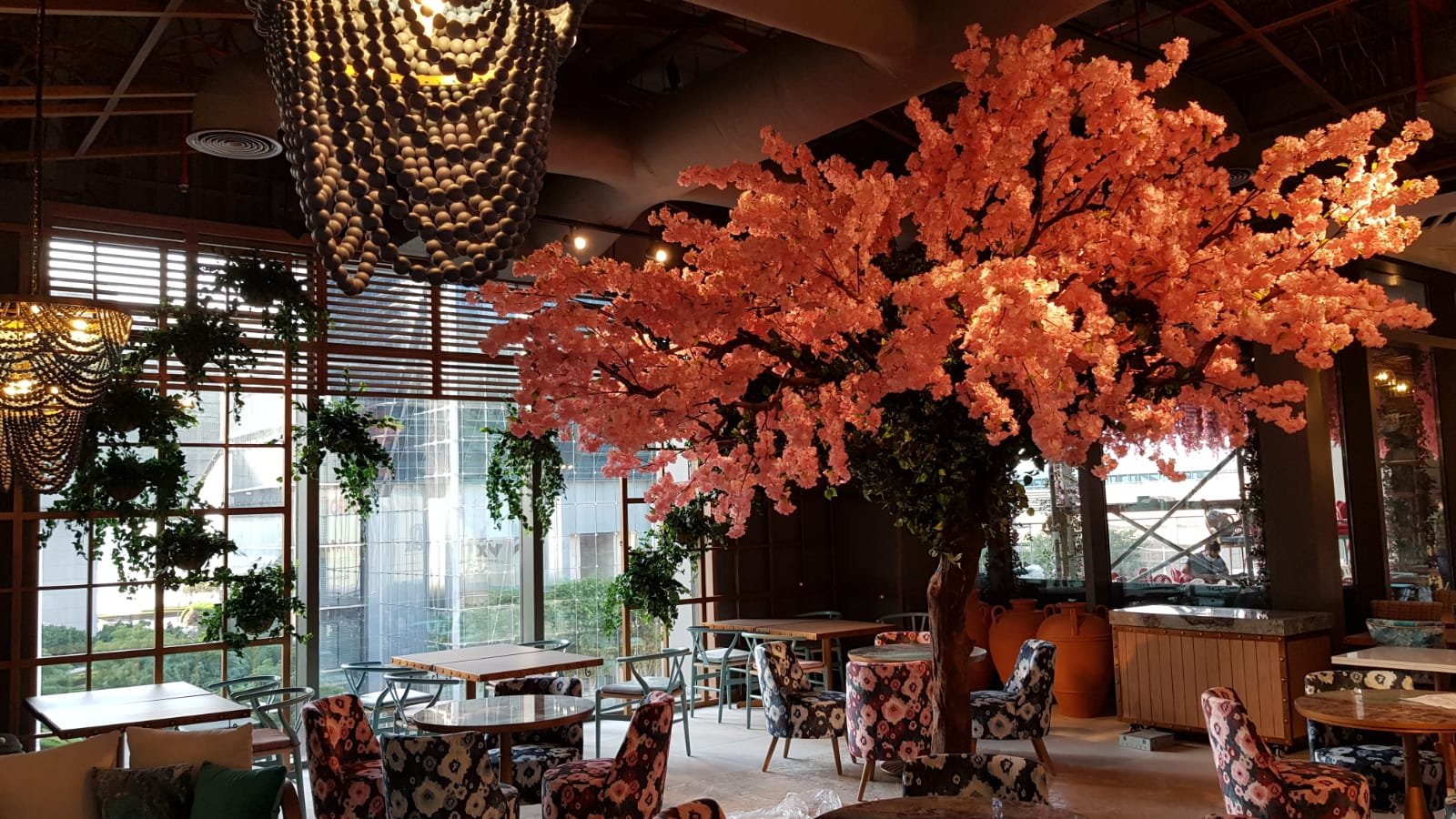Shopping Bag
No products in the cart.

Artificial plants are popular in restaurants because they require minimal maintenance and can add a touch of greenery to the space without the need for natural light. Here are some common types of artificial plants used in restaurants:
These can include artificial ferns, ivy, and other greenery arranged in pots or planters. They are versatile and can be used to create lush, natural-looking displays throughout the restaurant.
Artificial topiaries come in various shapes and sizes, such as balls, cones, or spirals. They are often used to add a formal and elegant touch to restaurant entrances, patios, or indoor dining areas.
Artificial trees, such as ficus trees or palm trees, are popular choices for restaurants looking to create a tropical or Mediterranean ambiance. They can be placed in corners, near windows, or as focal points in dining areas.
Artificial succulents, such as cacti or aloe vera plants, are low-maintenance options that add a modern and stylish touch to restaurant decor. They can be arranged in clusters or used as tabletop accents.
Artificial flowers, such as roses, orchids, or lilies, can be used to add color and elegance to restaurant tables or bar areas. They provide a vibrant and lifelike alternative to fresh flowers.
Artificial hanging plants, such as trailing vines or ferns, can be suspended from ceilings or mounted on walls to create a cascading effect. They are space-saving options that add visual interest to vertical surfaces.
Artificial grass or turf can be used to create green accents in outdoor seating areas, patios, or rooftop gardens. It provides a lush and inviting backdrop for diners to enjoy their meals al fresco.
Artificial boxwood hedges are often used to create privacy screens or partitions in restaurant patios or outdoor dining areas. They provide a natural and attractive barrier while requiring minimal maintenance
These are just a few examples of the many types of artificial plants used in restaurants. When selecting artificial plants for a restaurant environment, it’s essential to consider factors such as durability, realism, and overall design aesthetic to create a welcoming and visually appealing atmosphere for diners.
Air purification: Calathea plants help improve indoor air quality by removing toxins and impurities,
Air purification: Dieffenbachia plants are effective at removing indoor air pollutants such as forma
Low maintenance: ZZ plants are extremely easy to care for, requiring minimal watering and tolerating

Leave a Reply